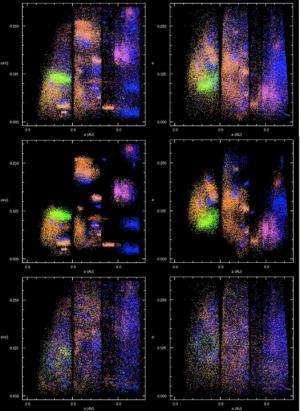Orbital motions of over 100,000 asteroids visualized

Who knew asteroids could be so beautiful and mesmerizing? In 2008, a group of astronomers led by Alex Parker did a study of the size distribution of asteroid families using data from the Sloan Digital Sky Survey. Asteroid families often have distinctive optical colors, the team said, and they were able to offer an improved way to separate out the family members into their colors. This resultant animation put together just this week by Parker shows the orbital motions of over 100,000 asteroids, with colors illustrating the compositional diversity and relative sizes of the asteroids.
"The compositional gradient of the asteroid belt is clearly visible," says Parker, "with green Vesta-family members in the inner belt fading through the blue C-class asteroids in the outer belt, and the deep red Trojan swarms beyond that."
All main-belt asteroids and Trojan asteroids with orbits known to high precision are shown in the video and the animation is rendered with a timestep of 3 days. Via Twitter, Parker said this animation took—from start to finish—20 hours to render on 8 CPUs.
For reference, the average orbital distances of Mercury, Venus, Earth, Mars, and Jupiter are illustrated with rings.
More information: "The Size Distributions of Asteroid Families in the SDSS Moving Object Catalog 4." Alex H. Parker, Zeljko Ivezic, Mario Juric, Robert H. Lupton, Michael D. Sekora, Adam F. Kowalski. arXiv:0807.3762 [astro-ph]. DOI: 10.1016/j.icarus.2008.07.002
Provided by Universe Today





















